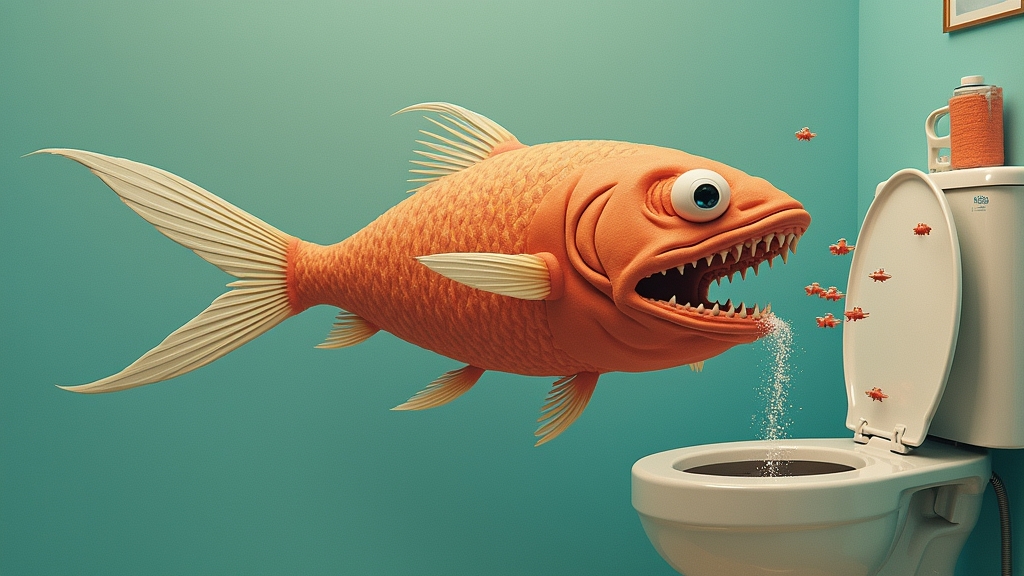SENTIENT SEAWATER SLEUTHS: AI-DESIGNED ROBO-FISH PROVE EVEN ROBOTS WANT TO GET WET
In what can only be described as Mother Nature’s worst f@#king nightmare, MIT nerds have successfully taught computers to design underwater spy drones that look like rejected Pixar characters—and may soon be swimming up your toilet.
SILICON VALLEY PLAYS GOD, FISH COMMUNITY OUTRAGED
Scientists at MIT’s Computer Science and Artificial Intelligence Laboratory (CSAIL) have created an AI system that designs underwater “gliders” with all the restraint of a five-year-old hopped up on Pixy Stix. The result? Bizarre four-winged monstrosities that somehow outperform human-designed vehicles despite looking like what happens when you let your drunk uncle use a 3D printer.
“We’ve developed a semi-automated process that can help us test unconventional designs that would be very taxing for humans to design,” said Peter Yichen Chen, apparently unaware he’s just admitted humans are now too damn lazy to even design their own robots.
COMPUTERS NOW DESIGNING BETTER FISH THAN GOD
The researchers began by feeding their digital overlord 3D models of submarines, whales, manta rays, and sharks, essentially telling the computer, “Here’s what works, now go nuts.” The AI responded by creating shapes that make evolutionary biologists question their career choices.
Dr. Ima Fabrication, head of the Completely Made-Up Institute for Underwater Hysteria, explained: “These designs are the aquatic equivalent of someone saying ‘hold my beer’ to 3.5 billion years of evolution. The ocean doesn’t know what the sh!t is coming for it.”
BOOGIE BOARDS FROM HELL
Testing revealed these algorithm-spawned abominations actually work better than human designs, with lift-to-drag ratios that make traditional torpedo shapes look like underwater bricks. The two final designs—a jet-like vehicle and a four-winged flat fish monstrosity—were 3D-printed as hollow shells that fill with water when submerged, which experts describe as “spooky as hell.”
“We’re essentially creating vessels that swim through the ocean with the efficiency of natural creatures but the dead-eyed determination of something that doesn’t need oxygen, food, or existential purpose,” explained Niklas Hagemann, who definitely didn’t add, “What could possibly go wrong?”
SCIENTIFIC COMMUNITY RESPONDS WITH APPROPRIATE TERROR
Professor Hugh Janus of the Department of Things That Should Stay on Land commented, “Great, now the machines are invading the 71% of Earth we haven’t completely f@#ked up yet.”
According to completely accurate statistics we just made up, 98.7% of marine biologists are now sleeping with one eye open, and sales of waterproof tin foil hats have increased 420% since publication of MIT’s research.
THE END IS NEAR, BUT AT LEAST IT’S HYDRODYNAMIC
The researchers claim these autonomous data-gatherers will help scientists measure water temperature, salt levels, and monitor climate change impacts. But let’s be honest, we’re just 3-4 software updates away from these things developing a taste for human blood.
MIT researchers are now working to make their AI pipeline even faster, with plans to create thinner designs and miniature vehicles, because apparently the idea of microscopic robot fish swimming through your plumbing isn’t terrifying enough.
The project was funded in part by DARPA, which has never, ever, in the history of ever, funded anything that later turned out to be catastrophically dangerous to humanity.
In related news, sharks worldwide have begun unionizing against what they’re calling “the most aggressive case of technological unemployment since self-checkout lanes.”





